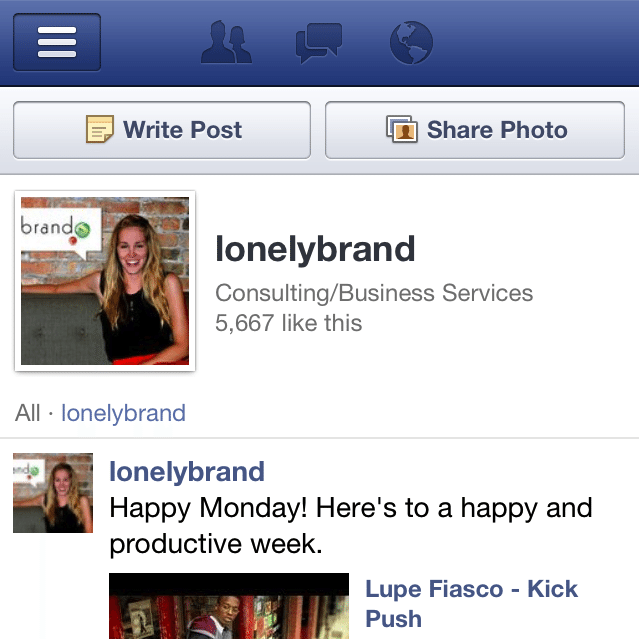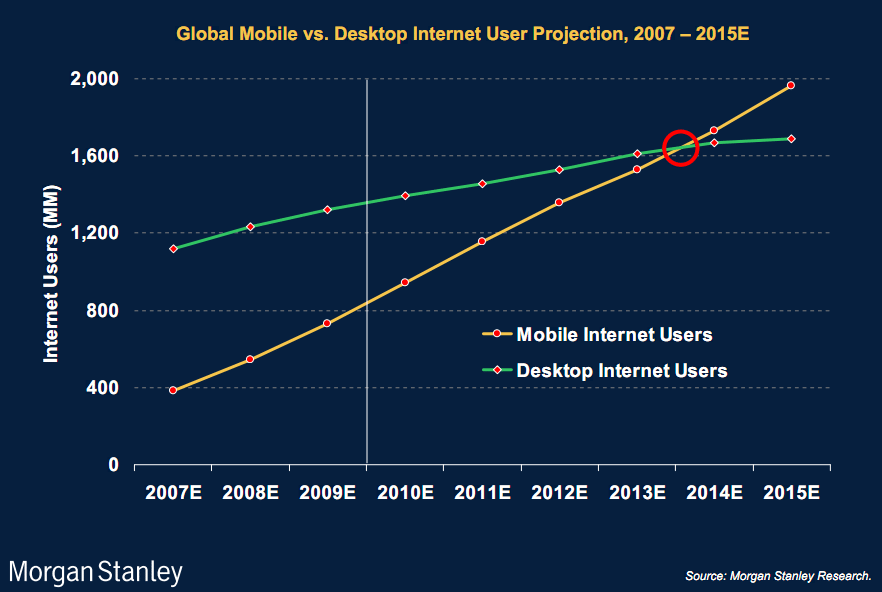
As marketers, we’ve got social strategy, we’ve got mobile strategy, and now we’ve got mobile-social strategy (or if you can say it without throwing up a little, “mocial”). Just look at the numbers.
According to a recent study from Enders Analysis, 40 percent of Facebook users access the platform via mobile apps. That’s 300 million people, people.
We’ve known for ages that mobile strategy will dictate the future of marketing. We’re also well aware that Facebook is a behemoth that can’t be ignored. But what’s a marketer to do when mobile is rapidly outpacing desktop?
Integration time
First off, let it be known that this mobile-social trend is stellar news for digital marketers.
The explosion of mobile Facebook use promises new ways for marketers to find and contact users, and will also provide an unprecedented amount of data on its user base. Thanks, social graph.
Strategy-wise, adding the mobile element to Facebook allows marketers to focus on users’ location and behavior. Think check-ins, loyalty programs and rewards for bringing in new customers.
Super Duper Hyper-relevance in mobile ads
This is no accident, by the way. Facebook is now fully focused on providing a seamless mobile experience for its users.
Plus, rumor has it Zuckerberg and company plan to launch a mobile ads program in the next year – a program that holds as much potential for marketers as Google’s mobile ad modules. Facebook’s desktop version already offers extreme precision for ad targeting with the social graph, but with the added element of location-based services on the mobile front, the possibilities are endless.
A few things we can look forward to? How about advertising to users when they’re nearby, or when they mention that they’re hungry. Save those ad dollars by working toward hyper-relevance within social networks.
Go where the people are
With 300 million users actively using Facebook’s mobile applications, ignoring the platform would be detrimental. And according to a study by Morgan Stanley, mobile online use will outpace desktop use in 2015, so other social networks are bound to follow suit.

If our own forecasts are correct, consumers will continue to use mobile devices for social and leisure-based activities – activities that we, as marketers, want to be a part of.
In 2012, more users will turn to Facebook’s mobile application, and the social media giant will continue to make improvements, from UX to launching a mobile ad program. Now is the time for marketers to adopt strategy specifically for mobile-social users.